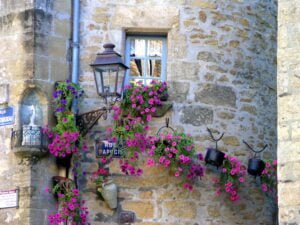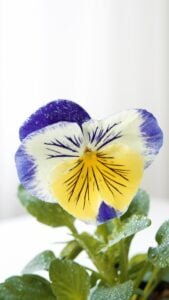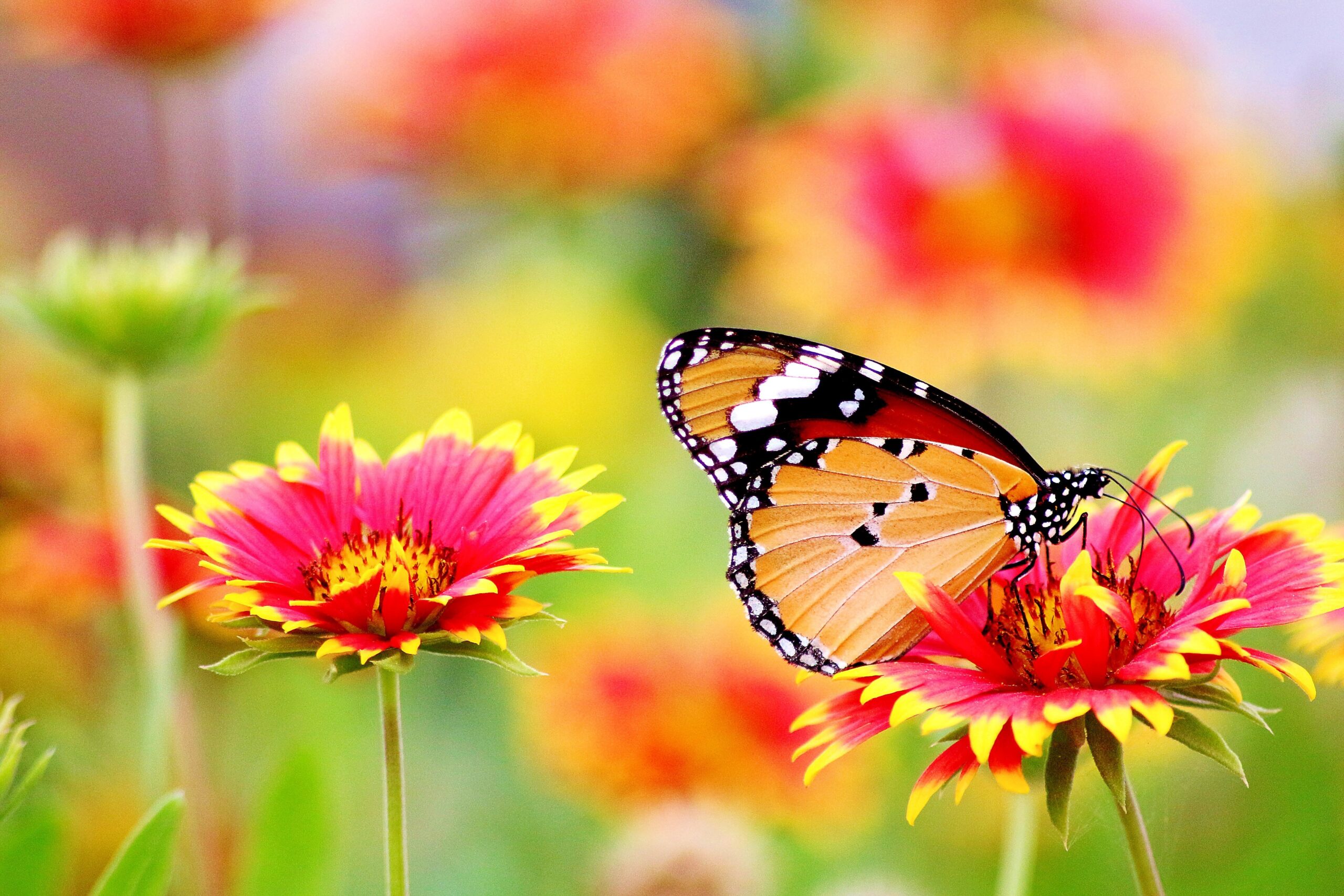Annual Flowers
Introduction
Annual flowers are flowering plants that produce blossoms in the same season each year and are damaged by harsh weather. Snapdragons and pansies, for example, are tender perennials that are cultivated as annuals. They are categorized as summer or winter annual flowers depending on when they bloom.
These plants are planted for their aesthetic value, color diversity, form, size, growth habit, and seasonality; they provide a rapid and low-cost show of color. Annuals are employed in the garden for a variety of functions, including providing a mass of color in front of hedges, in individual beds, borders, pots, and planters, filling shrubbery beds in the early stages, and covering up bulbs beds after they have bloomed. Tall-growing annuals are planted to offer quick-growing screens to obscure ugly situations, while smaller-growing annuals are planted for low edging around beds and paths. Cut flowers are grown from annuals with spectacular, long-lasting blossoms, while others, such as helichrysum and acroclinium, are well-suited to drying.
Starting with good seed, sowing or transplanting at the right time, soil fertility and preparation, suitable spacing, and appropriate after-care are all important factors in growing annual flowers.
Soil Preparation
Preparation of the soil begins well before the planting season of annual flowers. The dirt is turned over thoroughly after being dug to a depth of 20-30 cm. All stones, pebbles, wood, and rhizomes or roots that may sprout again should be removed, but leaves, grass, stems, and dead roots should be buried. Three or four times every week, re-spading is carried out. Before they seed, all weeds should be pulled. Before planting, the earth should once again be spaded.
Fertilizers and FYM are combined and well mixed. For each 10 sq m, a 5-6 cm coating of well-rotted FYM or leaf mould and 1-2 kg of ammonium sulphate is sufficient. A 2-3 cm coating of unwashed sand should be put to thick, clayey soils. Finally, the soil surface is raked smooth and ready to be planted.
Seed Procurement
Seed should be used as soon as possible after purchase, as it loses viability with age and incorrect storage. If you buy something a long time before you need it, keep it cold and dry until you’re ready to plant it. F 1 hybrid seed is more expensive than F2 hybrid seed, but it is of higher quality; however, it must be acquired each year. Seed should be devoid of weed seeds and clean. Seeds that are shriveled or undeveloped should be rejected.
Sowing Time
Sowing time of annual flowers are determined by germination, growth, and flowering responses to environmental circumstances, which differ by location. Firstly, annuals are grown at different times of the year in ecological regions with a short growing season, such as hilly areas, where all annuals are grown during the summer when the threat of frost has passed, whereas annuals are grown at different times of the year in ecological regions with longer growing seasons, such as the plains.
Summer annuals are sown in March-April and transplanted in April-May, whereas winter annuals are sown in September-October and transplanted in November-December. Monsoon annuals, such as cockscomb and celosia, are sown in July and August and transplanted in August and September. In August-September, salvia, dahlias, hollyhocks, balsam, and marigold seeds are also planted.
Seed Sowing
The seed bed should be coarsely crushed but hard while preparing nurseries. On the surface, a 1-2 cm layer of well-decayed leaf mould is distributed. At a distance of 5-7 cm, shallow furrows are formed. Single seeds are sowed and then coated with finely sieved leaf mould. The seed should be planted at a depth of about twice its diameter or thickness. A fine mist nozzle is used to moisten the seedbed adequately.
Water should not be allowed to run off. To keep the seedbed from drying out, cover it with newspaper, which will be removed after the seedlings appear. Seeds can be planted in 5-7 cm deep wooden flats that can be moved indoors as needed to avoid rain damage. Fungicides are applied to the seeds of plants that are prone to damping off.
Larkspur, poppies, and sweet pea seedlings are difficult to transplant; therefore, they are either sown directly or in peat pots and then transplanted with the pots. Morning glory, spider plant, cornflowers, and nasturtium all reseed readily, so there is no need to reseed them if they are to be cultivated in the same beds again.
Germination Time
Many factors influence seed germination, including the seed’s internal physiological parameters, moisture, temperature, and light. From sowing to germination, the typical number of days varies according on the species. The following are some germination times of annual flowers.
5 days
- Ageratum
- Cornflower
- Cosmos
- Dahlia
- Four-o-clock
- Marigold
- Morning glory
- Pink
- Stock
- Strawflower
- Zinnia
8 days
- China aster
- Calliopsis
- Nasturtium
10 days
- Baby’s breath
- Balsam
- Calendula
- Cock’s comb
- Coleus
- Forget-me-not
- Pansy
- Petunia
- Phlox
- Portulacca
- Scabiosa
- Spider plant
15 days
- Globe amaranth
- Impatiens
- Salpiglossis
- Scarlet sage
- Snapdragon
- Summer cyprus
- Vinca
20 days
- Candytuft
- Gaillardia
- Larkspur
- Lupine
- Rudbeckia
- Verbena
Transplanting
Seedlings that are small and young withstand transplanting better than seedlings that are larger and older. Summer annual seedlings can be transplanted 2-4 weeks after sowing. Winter annuals are transplanted a few weeks after they are sown. The plants are gently lifted to avoid damaging the roots. Seedlings are carefully separated, with as much soil as possible remaining with the roots. It’s important that the soil isn’t too dry or too damp.
The optimum time to transplant is in the evening; uprooted plants should be kept in the shade to avoid drying out their roots. The seedlings are planted as soon as they are removed from the nursery, in holes large enough to fit the root system without disturbing it. After transplanting, firm the dirt around each seedling and properly water it. Plant-to-plant distances are determined by the plant’s size (spread), climatic circumstances, and soil fertility.
Thinning
If seeds are placed directly in the flower bed, they are thinned once two genuine leaves have developed, ensuring that the remaining plants are spaced appropriately for their size and growth habit.
Pinching
Many plants, such as ageraturn, snapdragon, spiderplant, and verbena, have their growing tips clipped off to encourage branching and keep them small and compact.
Training and Supporting
Staking or the use of specific plastic netting is required for vines such as sweet peas, cyprus vine, clitoria, and weak-stemmed, heavy-flowered plants such as carnations, snapdragons, and salpiglossis.
Read Also: How to establish lawn
https://mianfarms.com/lawn-establishment/
Watering
When flower beds are relatively dry, they are fully hydrated. In warmer climes, irrigating at noon is not a good practice; it is preferable to irrigate in the evening. It’s best to avoid sprinkling water on the blooms and leaves.
Hoeing
Hoeing loosens the soil, allowing for better root respiration and weed control. Firstly, it is done when the soil has dried out a little. Hoeing should not go too deep, as this will harm the finer roots. It should be done carefully so that it can efficiently save moisture while also providing aeration to the roots. Secondly, all weeds should be eliminated and the bed firmed after hoeing. Before seed formation, weeding must be performed.

Informative
good information😉
ANAND NAWAL
[…] Read Also; Annual Flowers […]
I truly appreciate this post. I have been looking all over for this! Thank goodness I found it on Bing. You have made my day! Thank you again
Regards. I appreciate this!
Hey there! Do you know if they make any plugins to help with SEO? I’m trying to get my blog to rank for some targeted keywords but I’m not seeing very good success. If you know of any please share. Many thanks!
A lot of thanks for your whole efforts on this web site. Gloria enjoys setting aside time for investigation and it’s simple to grasp why. A lot of people notice all concerning the dynamic manner you give reliable ideas by means of your blog and as well invigorate contribution from others on this subject while our own daughter has been starting to learn a lot. Have fun with the rest of the new year. You are conducting a very good job.
Thanks for every one of your hard work on this web page. My mum loves setting aside time for internet research and it’s really easy to understand why. I learn all regarding the compelling way you present invaluable things through the website and even increase contribution from other people on the subject plus our child is in fact understanding a great deal. Take advantage of the rest of the year. Your conducting a useful job.
Thanks for all your valuable efforts on this site. My mom really likes conducting investigations and it’s obvious why. Many of us know all of the powerful medium you make very useful information via the website and even boost response from other people on that concept while our own simple princess is without a doubt becoming educated so much. Take advantage of the rest of the year. You’re carrying out a very good job.